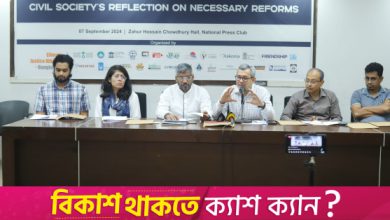For whom the ADP spends


A highlight in Tuesday’s business news in the electronic and print media is the data on public expenditures under the Annual Development Program (ADP) in FY24. This shows that ADP spending reached a recent low of 80.92%, only marginally exceeding the Covid-19 (FY20) year low of 80.39%.
Is this a concern? The answer is a categorical no. We spent Tk2,05,858.36 crore in FY24, slightly exceeding the Tk2,01,486.78 crore spent the year before. Spending grew by over 2% at a time when the budget was supposedly on austerity. Arguably, considering inflation, real spending declined. Yet, we have to ask who benefited from this spending? How much progress did we make in building physical and social infrastructure that would enhance economic growth and social welfare in the medium and long term?
The answer is not immediately obvious. Questions about the quality of the ADP have always been salient but routinely ignored beyond paying lip service. A smell test is the in-year pattern of expenditures. Bunching at the end of the fiscal year is typical. FY24 was no exception. Over 23% of the total ADP was spent in June 2024, just as in June 2023. As usual, the bunching of government financed expenditure was higher than the bunching of foreign credit financed expenditures. No change.
Another smell test is the sector-wise distribution of expenditures. Local government, power, housing and works, energy and minerals, industry, information and communication technology are among those where the implementation rate is well above the overall rate of implementation. In some of these cases it even exceeds 100%. These are the sectors where questionable programmes and projects presumably galore.
What do we mean by questionable? Economists describe education, health, urban infrastructure, clean water, clean air as public goods addressing human liveability priorities. Governments either directly provide public goods or regulate their provision to make sure that availability with acceptable quality standards is fairly distributed. Bulk of nearly 1,400 projects in the FY24 ADP would struggle to pass the public good test.
Time and cost overruns are common to all programmes and projects irrespective of size and sectors. It is therefore hard to attribute them to technical or capacity related factors. They arise from systemic deficiencies, of which corruption is central. Populism, geographic or sectoral favouritism may have played a secondary role. Weakened norms and accountability made the rules and institutions overseeing the propriety of development expenditures a plaything of the privileged and powerful. We fell victim to universal moral failures. Corruption, blurring of lines between contractors, criminals, and incumbent politicians became the rule rather than the exception.
We got used to a complete absence of cooperation in the delivery of quality education, health, urban spaces, and rampant environmental damage caused by development projects. Bangladesh’s propellant force in the last decade and a half has been its deeply unequal development process. Government ministries were encouraged to prepare capital intensive projects with large price tags well suited to flashy announcements.
Inspired by this “temples” strategy of development, we reached the cusp of infrastructural indigestion, which caused chronic inflation, wasted investments and, of late, depleted foreign exchange reserves. They did not even pretend to expand public goods provision. Notwithstanding Dhaka metro, elevated expressway, and several flyovers and multilane roads, the nation’s urban infrastructure has remained abysmal, turning several urban spaces into industrial slums. Construction was a lucrative business for politicians and connected local and foreign contractors, after all.
In his book “India Is Broken”, Ashoka Mody quotes the American founding father and a constitutional scholar, James Madison, who warned more than two centuries ago: “Men of factious tempers, of local prejudices, or of sinister designs, may, by intrigue, by corruption, or by other means, first obtain the suffrages, and then betray the interests of the people.”
The only correction the above quote needs to be applicable to the way the previous government conducted itself is the word “Men” with which it begins. You could add “and women too” considering their role at the top of the government.
The government enabled Members of Parliament, ministers, senior bureaucrats, local party leaders, criminals and shady contractors with administrative and political power, money and muscle to gain a foothold in the design and implementation of a large fraction of the ADP.
The ADP became part of the previous government’s weakness for outward show that blatantly exhibited a distaste for social necessities and a penchant for flying well above the earth, if not in the havens. The bumper sticker for this, hopefully past dark era, reads, borrowing Ashoka Mody’s articulation, “I me, mine, I me mine.” This basically is the short answer to the question: For whom does the ADP spend?
Zahid Hussain is a former lead economist at World Bank Dhaka office




